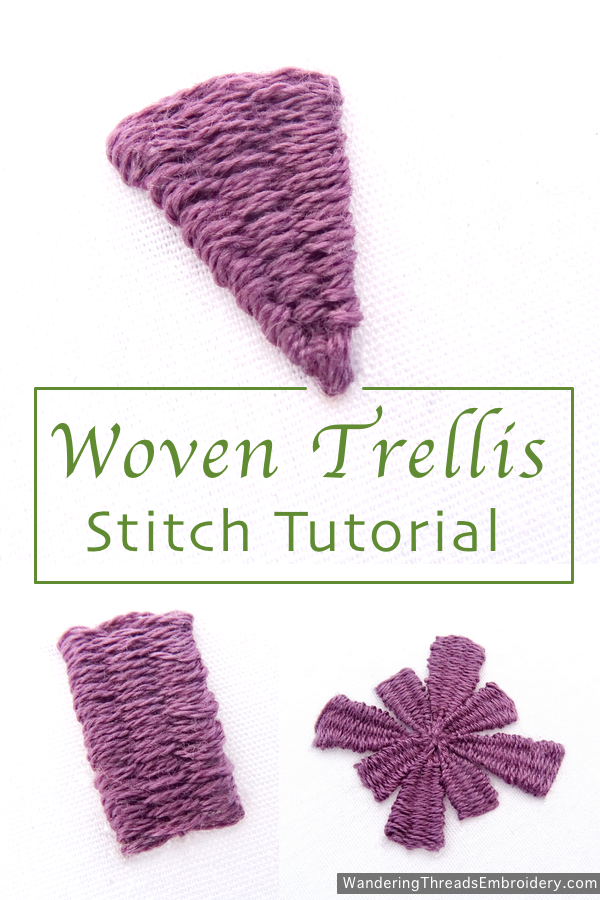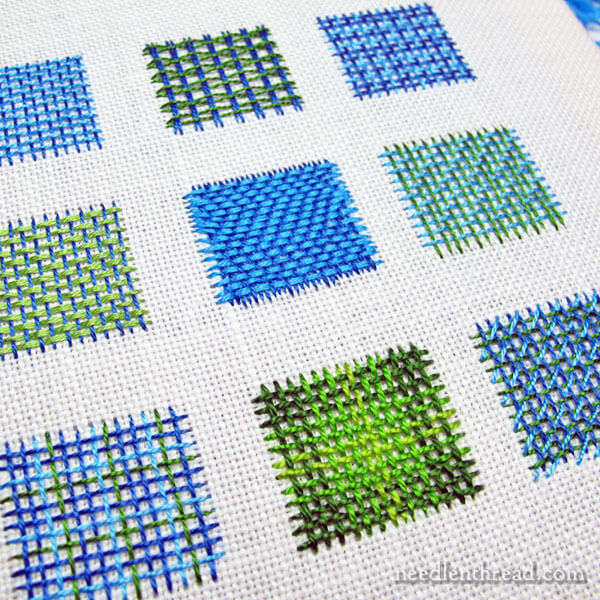Weave Stitch Embroidery
Embroidery is an art form that has been around for centuries, with intricate designs that capture the imagination. Weave stitch embroidery is one such technique that has been gaining popularity in recent times. With its beautiful textures and patterns, it has become a favorite among embroidery enthusiasts.
For those who are new to embroidery, it can be overwhelming to know where to start. Choosing the right fabric and thread can be challenging, and finding the right technique can take some trial and error. This is where weave stitch embroidery comes in - it is a versatile technique that can be used on a variety of fabrics, from cotton to silk, and is perfect for creating intricate designs.
The target of weave stitch embroidery is to create a raised, woven effect on the fabric surface, using a combination of needle weaving and stitching. This technique creates a series of horizontal and vertical stitches that interlock, forming a pattern on the surface of the fabric.
This article will provide an overview of weave stitch embroidery, including its benefits, techniques, and tips for beginners.
Weave Stitch Embroidery: A Personal Experience
As someone who has been practicing embroidery for several years, I was drawn to weave stitch embroidery because of its intricate patterns and textures. I started by experimenting with different thread weights and fabrics, trying out various weaving and stitching techniques. Over time, I learned how to manipulate the threads to create unique patterns and designs, and weave stitch embroidery soon became one of my favorite techniques.
The key to successful weave stitch embroidery is to use a combination of weaving and stitching techniques. The vertical stitches are created using a basic running stitch, while the horizontal stitches are created using woven threads. This creates a raised effect on the fabric surface, adding texture and depth to the design.
Another tip for beginners is to use contrasting thread colors. This will help to bring out the texture and pattern of the design, making it more visible. It is also important to choose the right fabric - a fabric that is too thin or flimsy may not hold up well under the tension of the stitches, while a fabric that is too thick may be difficult to work with.
The Benefits of Weave Stitch Embroidery
Weave stitch embroidery has several benefits for embroidery enthusiasts. Firstly, it is a versatile technique that can be used on a variety of fabrics, making it perfect for a range of projects. It is also a relatively easy technique to master, making it a great option for beginners.
The woven effect of weave stitch embroidery creates a unique texture on the fabric surface, adding depth and dimension to the design. It is also a great technique for creating raised designs, such as flowers or leaves, which can be difficult to achieve with other embroidery techniques.
Techniques for Weave Stitch Embroidery
There are several different techniques for weave stitch embroidery, each with its own unique style and effect. Here are a few popular techniques:
Basketweave Stitch
The Basketweave stitch is a popular technique that creates a woven effect on the fabric surface. It involves creating diagonal stitches across a grid of vertical and horizontal threads, creating a pattern that looks like a woven basket.
Tassel Stitch
The Tassel stitch is a technique that creates a raised, textured effect on the fabric surface, similar to the tassels on a piece of fabric. It involves weaving threads in a diagonal pattern, and adding long stitches in a different color to create the tassel effect.
Question and Answer
Q: What materials do I need for weave stitch embroidery?
A: You will need embroidery thread, a needle, and fabric. It is important to choose the right fabric for your project, as a fabric that is too thin or too thick may not work well with the weave stitch embroidery technique.
Q: Is weave stitch embroidery difficult to learn?
A: Weave stitch embroidery is a relatively easy technique to learn, but it may take some practice to get the hang of it. It is important to start with simple designs and work your way up to more complex patterns as you gain confidence.
Q: Can I use weave stitch embroidery on any fabric?
A: Weave stitch embroidery can be used on a variety of fabrics, including cotton, silk, linen, and wool. It is important to choose a fabric that is appropriate for your project, and to test the technique on a small section of fabric before starting your project.
Q: What are some common mistakes to avoid in weave stitch embroidery?
A: Common mistakes in weave stitch embroidery include using too much tension on the threads, using the wrong type of needle, and not weaving the threads tightly enough. It is important to take your time and practice the technique before starting your project, and to always use the correct tools and materials.
Conclusion
Weave stitch embroidery is a beautiful and versatile technique that can be used to create intricate designs and patterns on a variety of fabrics. With the right materials and techniques, anyone can learn how to master this technique and create stunning embroidery designs. Whether you are a beginner or an experienced embroiderer, weave stitch embroidery is an excellent technique to add to your repertoire.
Gallery
Basket Weave Embroidery Stitch + Basket Embroidery Tutorial In 2021

Photo Credit by: bing.com / ghoul crewel crewelghoul
Basket Weave Embroidery Stitch + Basket Embroidery Tutorial - Crewel Ghoul

Photo Credit by: bing.com /
Woven Trellis Embroidery Tutorial - Wandering Threads Embroidery

Photo Credit by: bing.com /
Basketweave Stitch & Shading – NeedlenThread.com

Photo Credit by: bing.com / stitch weaving embroidery basketweave stitches needlenthread shading filling basket needle woven when mean comes does using color
Hand Embroidery. Weave Stitch. - YouTube

Photo Credit by: bing.com /
